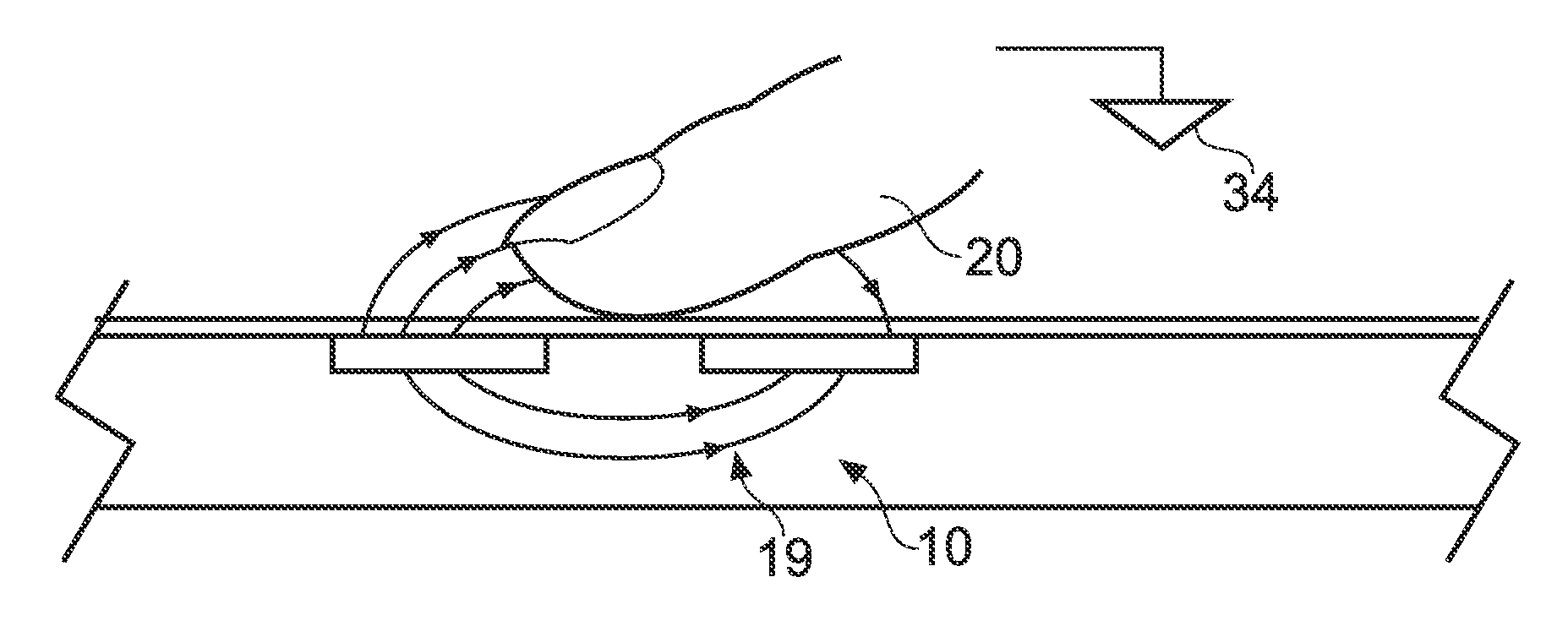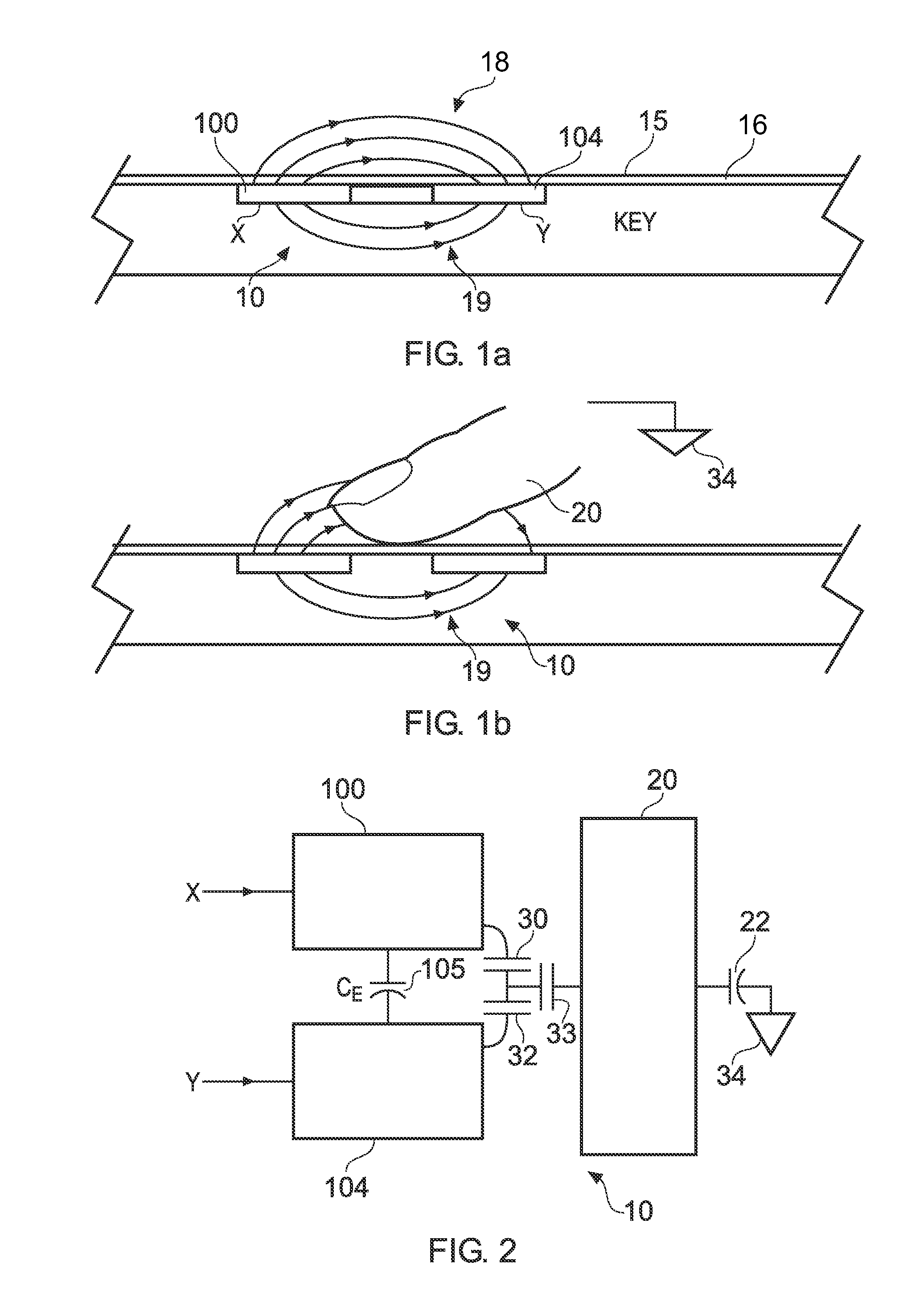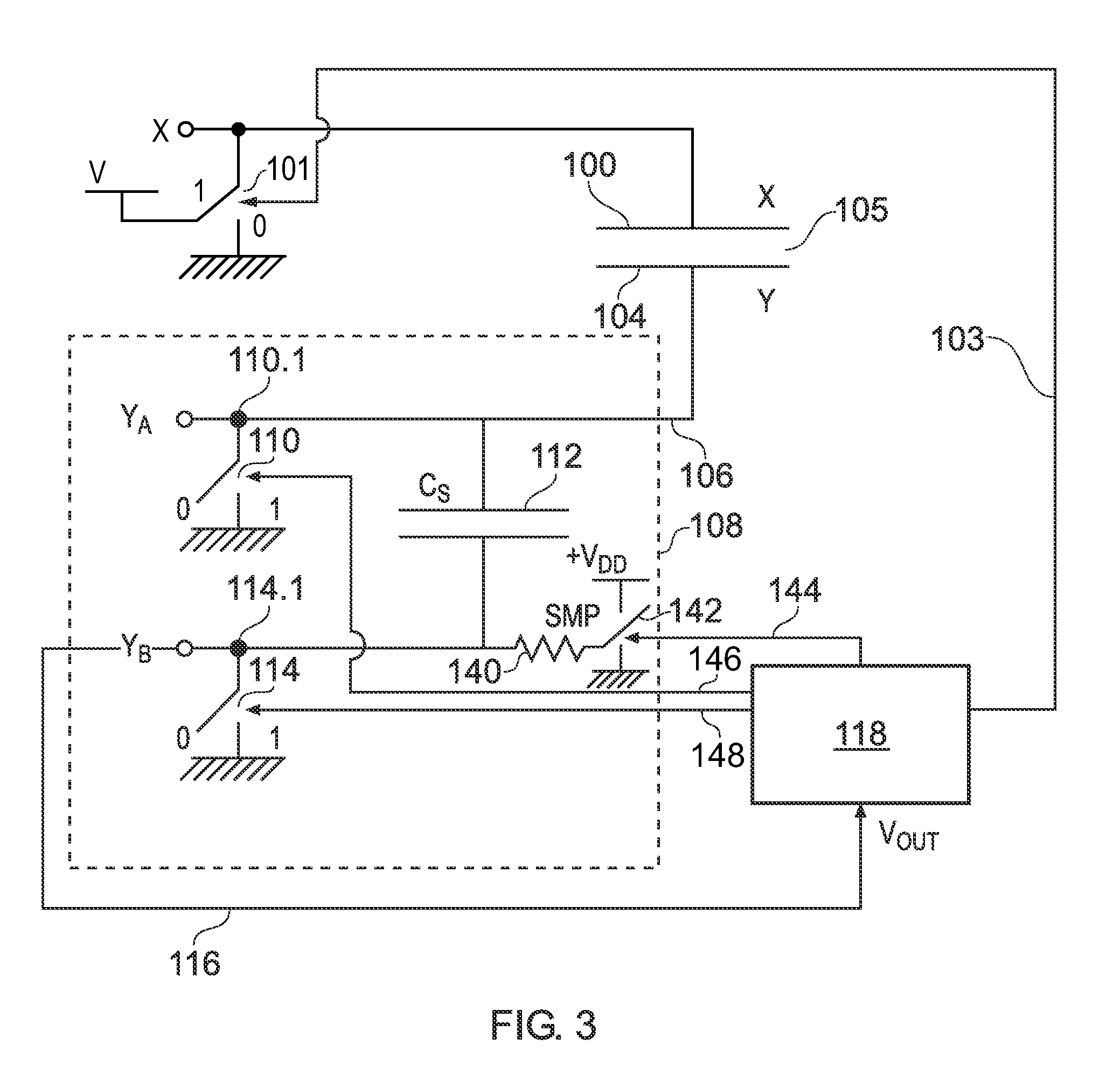Noise Reduction in Capacitive Touch Sensors
a capacitive touch sensor and capacitive technology, applied in the field of capacitive touch sensor noise reduction, can solve the problems of affecting the operation of the touch sensor on the mobile phone, so as to avoid a frame being compromised, improve the effect of data quality and improve the effect of accuracy
- Summary
- Abstract
- Description
- Claims
- Application Information
AI Technical Summary
Benefits of technology
Problems solved by technology
Method used
Image
Examples
Embodiment Construction
[0037]FIG. 1a is a schematic cross-section through a touch sensitive control panel 15 in the absence of an actuating body, typically a user's finger or stylus.
[0038]FIG. 1b corresponds to FIG. 1a, but shows the same cross-section in the presence of an actuating body in the form of a user's finger.
[0039]The touch sensor shown in FIGS. 1a and 1b correspond to an example in which a pair of transverse electrodes form a touch sensor. As shown in FIG. 1a a pair of electrodes 100, 104 which form a drive or X plate and a receiving or Y plate in the following description are disposed beneath the surface of a touch sensitive control panel 15. The electrodes 100, 104 are disposed beneath a dielectric layer 16, for example a glass or plastics panel. As shown in FIGS. 1a and 1b the touch sensor 10 is arranged to detect the presence of a body such as a user's finger 20 as a result of a change in an amount of charge transferred from the Y plate 104. As shown in FIG. 1a when the X plate 100 is char...
PUM
 Login to View More
Login to View More Abstract
Description
Claims
Application Information
 Login to View More
Login to View More - R&D
- Intellectual Property
- Life Sciences
- Materials
- Tech Scout
- Unparalleled Data Quality
- Higher Quality Content
- 60% Fewer Hallucinations
Browse by: Latest US Patents, China's latest patents, Technical Efficacy Thesaurus, Application Domain, Technology Topic, Popular Technical Reports.
© 2025 PatSnap. All rights reserved.Legal|Privacy policy|Modern Slavery Act Transparency Statement|Sitemap|About US| Contact US: help@patsnap.com



